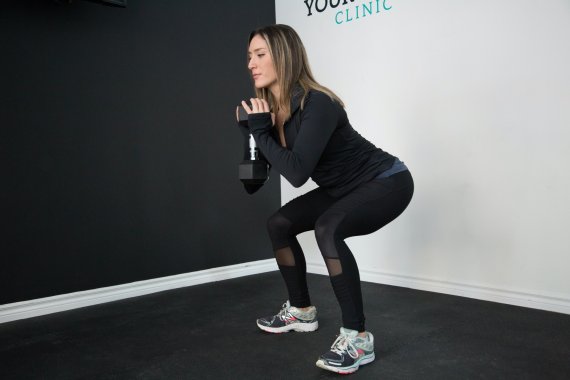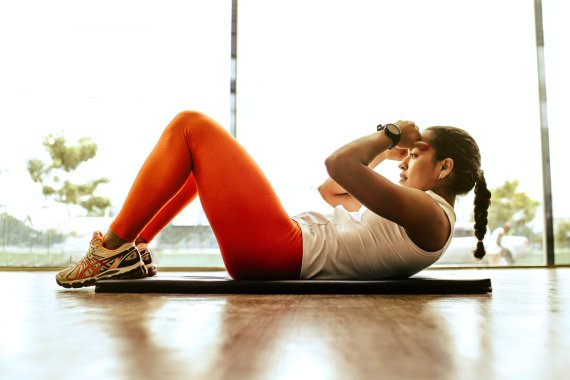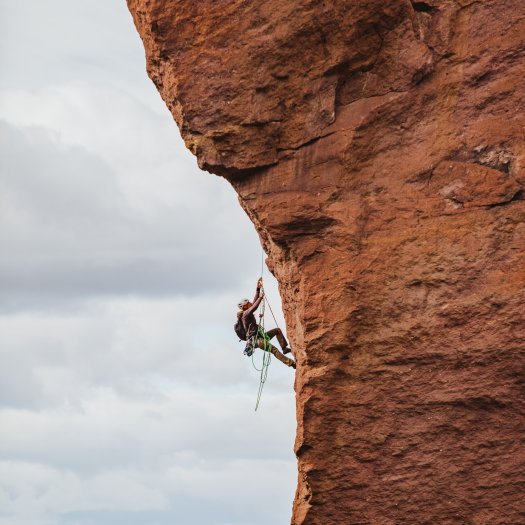Sport climbing works the muscles like hardly any other sport. Unlike the targeted training of specific muscle groups in the gym, the muscles are loaded holistically here and always with rather flowing movements and the weight of your own body. You will therefore seldom find muscleheads in professional climbing. Most sport climbers are relatively light and their muscles are perfectly defined. As sport climber Jürgen Reiss puts it in "Die Welt": "Bodybuilders often have little strength with a lot of mass - in climbing it's the other way around."
Those preparing for the new climbing season will therefore primarily work on fitness and body tension. Strength training and endurance training should be fused together. These 8 exercises are particularly suitable as climbing training. Most of them can also be done at home and many without additional equipment.
Aim: Strengthens balance, good as an introductory exercise.
Exercise sequence: Stand on one leg and close the eyes. Then take six deep breaths in and out. Change legs and repeat the exercise. It is best to do the change five to seven times.
Goal: Balance, body tension, fitness and leg muscles are trained. Squats are considered a workout all-rounder.
Exercise sequence: Stand up straight, feet about shoulder-width apart. Slowly bend knees, stretching buttocks backward. Knees bend slightly outward to protect joints. Arms point forward, upper body remains upright. Repeat 20 times.
If you have a balance pad available, you can do the squat on the pad and thus do something for your knee joints.

Aim: Strengthens balance and activates body awareness.
Exercise sequence: Stand and bend your upper body slightly forward. Raise one leg and swing it back and forth, increasing the swings. Balance the secure stance with your arms if necessary. After about 20 seconds you can change legs and repeat the exercise five times.
Aim: To strengthen the abdominal muscles (straight and oblique abdominal muscles).
Exercise sequence: Lie on back with legs bent. The soles of the feet are completely on the floor, the fingers are interlocked behind the ear but not behind the head. Lift your torso off the floor and bring it a few inches toward your knees. Keep your elbows extended outward. Repeat the exercise 40 times.

Aim: Strength training, strengthening the arm and abdominal muscles.
Exercise sequence: Lie flat on your stomach. The legs are straight and the toes are on the floor. Arms are bent and lie beside head. Push up on forearms until body is parallel to floor. It rests on the forearms and toes. Repeat the exercise ten times, then take a short break in the starting position and begin again.
Goal: Musclebuilding, training of the broad back muscle, the biceps and triceps as well as the forearm muscles.
Exercise sequence: A pull-up bar can be used, but also the stable branch of a tree. Hang straight on the bar, palms facing away from the body. The distance between the hands is equal to the length between the elbows with the arms extended outward.
Press shoulder blades inward and elbows downward. This will push the shoulders further back while keeping the chest forward. After the chin has been lifted above the bar in this way, lower the body slowly and in a controlled manner back to the starting position. Repeat the exercise ten to 15 times if possible.
Aim: Training of the fingers, which are heavily stressed during climbing.
Exercise routine: Even without a campus board, you can do something to strengthen your fingers, and do it on the side. Use the time during meetings or while watching TV to squeeze a tennis or rubber ball. Even better is a rubber ring (kneading ring), which can also be pressed from the inside out to train the stretching of the fingers.
Goal:"The head is the strongest muscle in climbing," as Wolfgang Güllich, the sports climber who died in 1992, knew. Bouldering - climbing at jumping height - allows you to develop the mental strength to be able to call up your physical performance on the mountain.
Exercise sequence: Find routes in the climbing or bouldering hall that do not immediately push you to your performance limits. Pleasurable climbing strengthens your own skills and increases the incentive to tackle greater problems or heights again without fear. The effect is further enhanced by joint climbing training with friends - so you can also develop plans for the big climbing tour next season.
Despite the above exercises, it is advantageous not to let the climbing breaks become too long. Climbing is still best practiced while climbing - and the next climbing hall is certainly not far away.
 OutDoor by ISPOOutDoor in transition
OutDoor by ISPOOutDoor in transition
- ISPO awards
- Mountain sports
- Bike
- Design
- Retail
- Fitness
- Health
- ISPO Job Market
- ISPO Munich
- ISPO Shanghai
- Running
- Brands
- Sustainability
- Olympia
- OutDoor
- Promotion
- Sports Business
- ISPO Textrends
- Triathlon
- Water sports
- Winter sports
- eSports
- SportsTech
- OutDoor by ISPO
- Heroes
- Transformation
- Sport Fashion
- Urban Culture
- Challenges of a CEO
- Trade fairs
- Sports
- Find the Balance
- Product reviews
- Newsletter Exclusive Area
- Magazine





